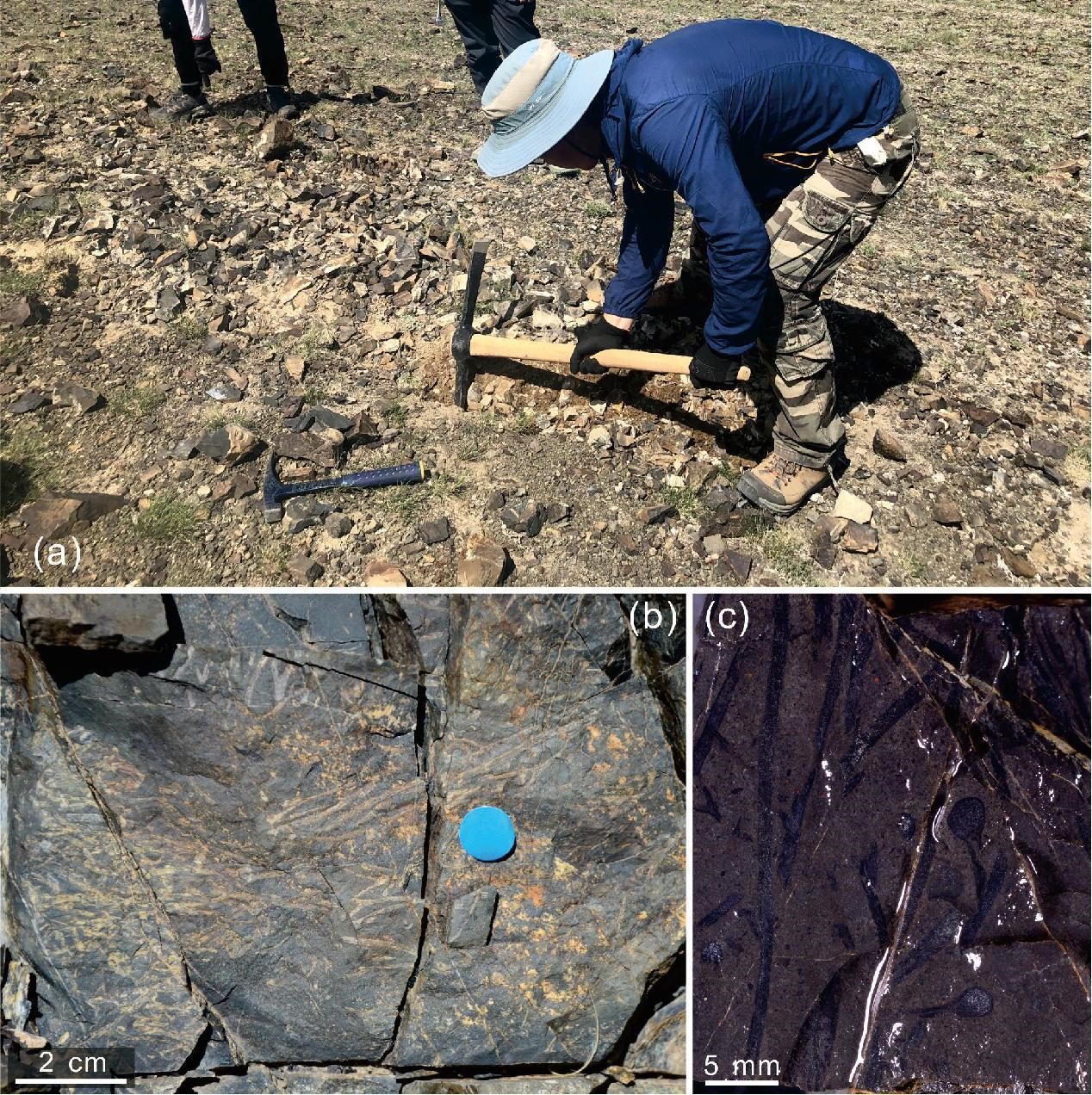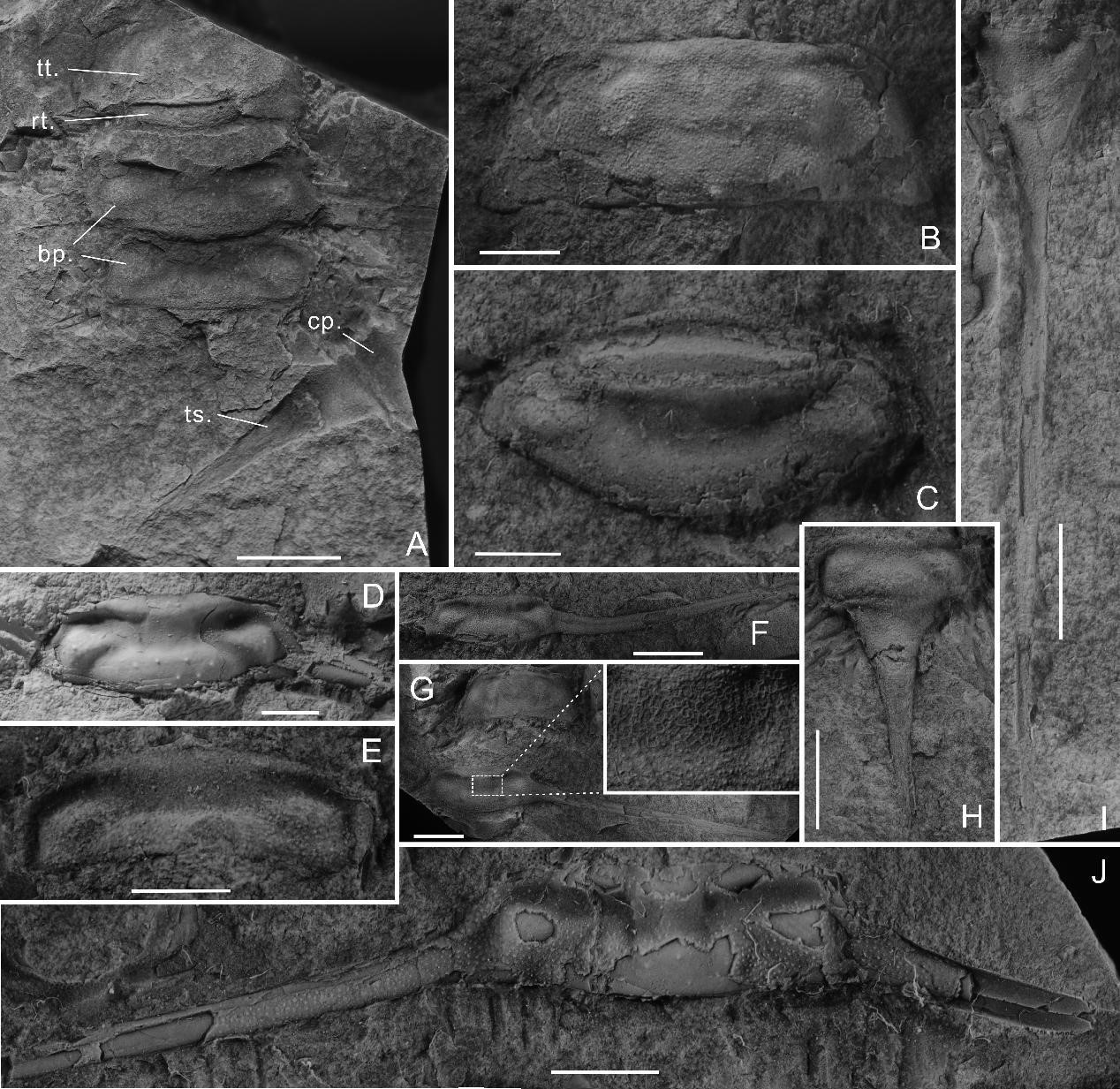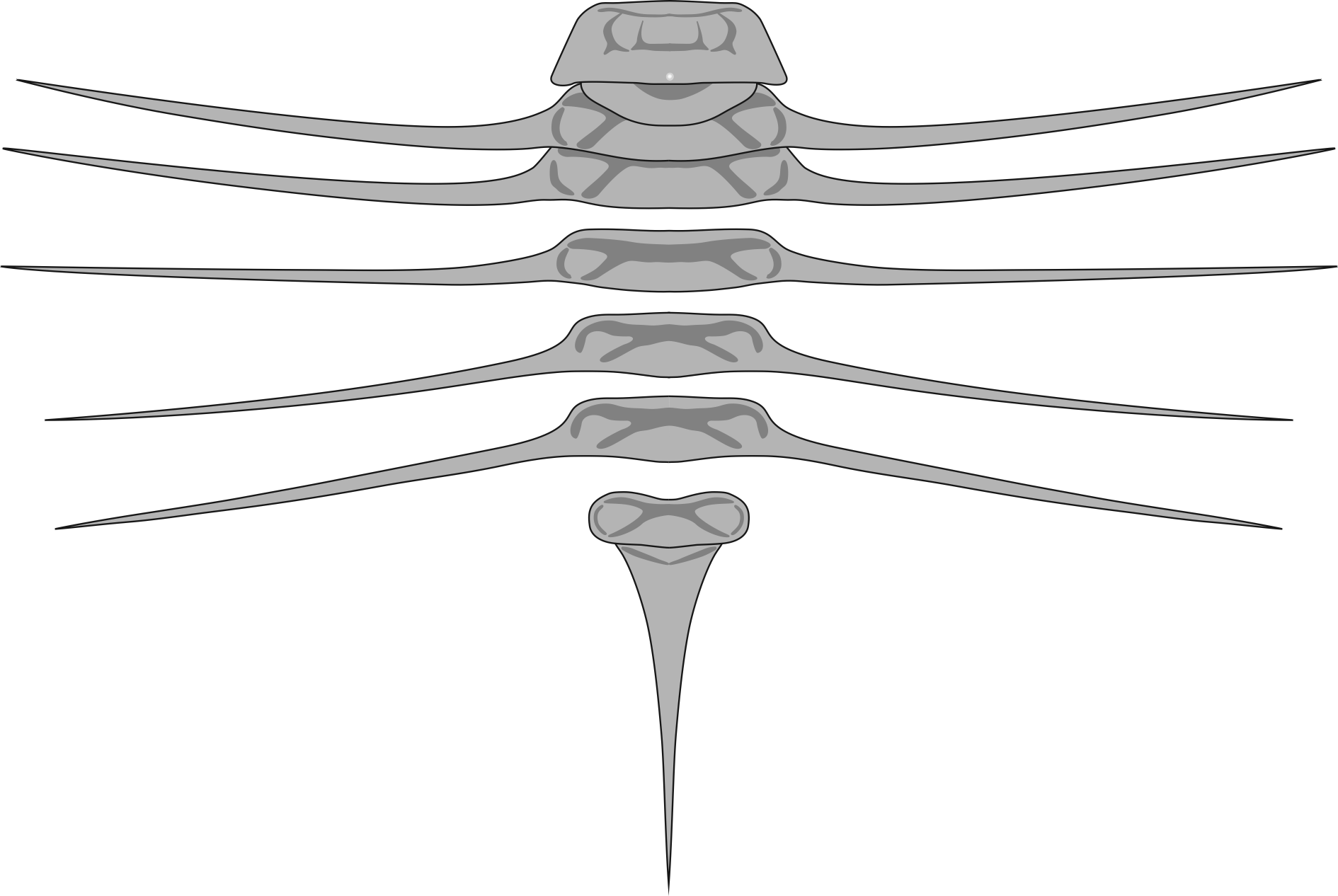A new freshwater arthropod, Maldybulakia saierensis sp. nov., has been discovered by Chinese researchers from the Silurion of the western Junggar, Northwest China. The discovery of this species pushes back the earliest appearance of the Maldybulakia, previously known from the Devonian of Kazakhstan and eastern Australia, to the late Silurian.
It is the oldest body fossil record of a putative freshwater arthropod outside Laurussia, and greatly expands its palaeogeographical distribution, according to the researchers.
Results were published in Papers in Palaeontology.
Compared to marine life or marine ecosystems in the early and middle Palaeozoic, our understanding of non-marine communities in this period is poor, in large part because of the rarity of the fossil record of early freshwater and terrestrial organisms, especially animals. Although the oldest land on Earth and life on it date from the Precambrian, terrestrial life during this time consists largely of microbes.
Arthropods, the most species-rich animal phylum, inhabited mostly marine or transitional environments before the Silurian. Molecular clock estimates suggest that the terrestrialization of arthropods began in the Cambrian to Ordovician, but the trace fossil record suggests that freshwater arthropods may have existed in the Ordovician, and amphibious tracks on tidal flats and coastal dunes are known even earlier, in the Cambrian.
However, freshwater and/or terrestrial arthropods (represented by the Myriapoda and trigonotarbid arachnids) with undisputed body fossil evidence did not appear before the middle to late Silurian. Silurian freshwater and/or terrestrial arthropods are known mainly from southern Laurussia, represented by England and Scotland. By the Early Devonian their fossil record and diversity increased significantly, and their palaeogeographical distribution extended to other plates/terranes.
In this study, new insights into the origin and evolution of early non-marine life were provided by a joint research group of Prof. XU Honghe, WANG Yi, and LIU Bingcai from the Nanjing Institute of Geology and Palaeontology of the Chinese Academy of Sciences (NIGPAS).
All fossils were collected from the volcanic and/or pyroclastic rocks occurring widely in the Palaeozoic strata of the western Junggare Basin, Xinjiang. With the evidence of plant fossils obtained from the same bed, and more recent zircon geochronology studies, during which petrologists have conducted a large number of zircon geochronology studies on the volcanic (or pyroclastic) rocks in this volcanic arc and the magmatic rocks intruded into the strata, and obtained zircon ages for these volcanic or pyroclastic rocks, which were originally classified as Devonian, as now being Silurian, c. 436-420 Ma.
"The age of our fossils is determined as the Pridoli of the Silurian," said XU.
The evident morphological differences between different species of Maldybulakia, and the discovery of them on both sides of the Palaeo-Tethys Ocean, suggesting that Maldybulakia may have a vicariant origin, or that land bridges in the Palaeo-Tethys Ocean provided migration channels for Maldybulakia.
"In the middle and late Silurian, freshwater arthropods are now known from multiple plates/terranes, indicating that arthropods were already far from the sea and were exploiting terrestrial ecological niches during this period," said XU. "Freshwater arthropods may have first appeared in the early Silurian or even earlier, as suggested by fossil calibrated molecular time trees."










